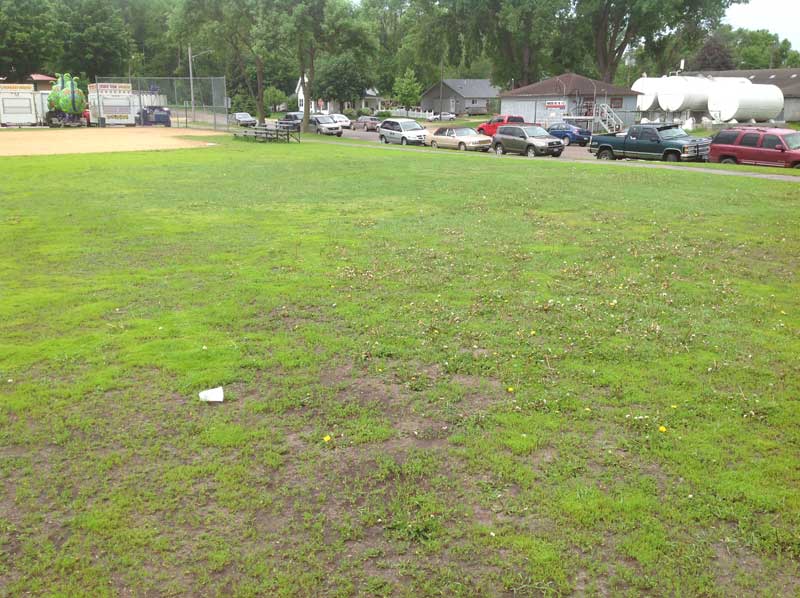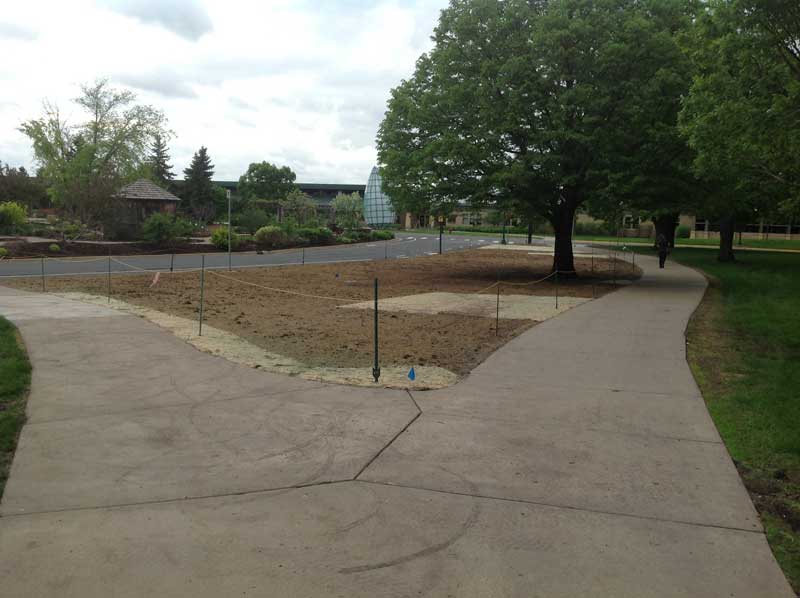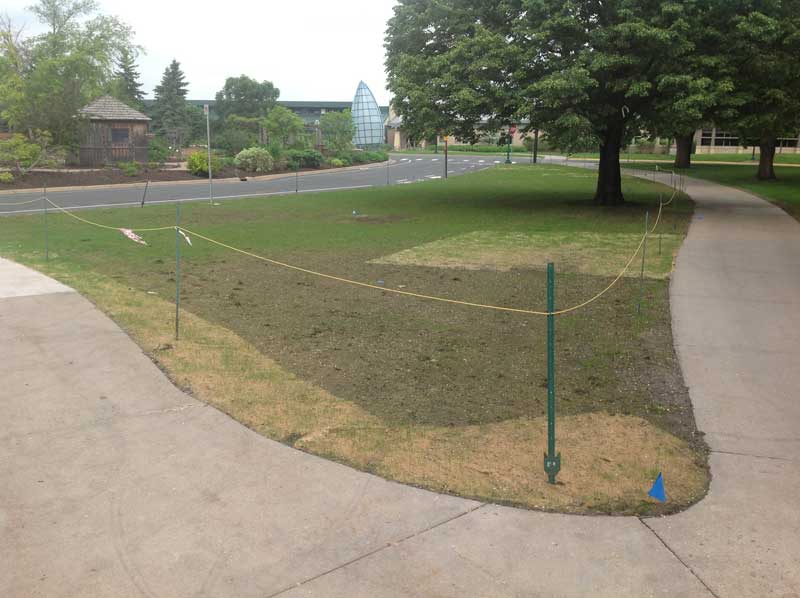By Sam Bauer
Perfect and Low-Maintenance?
The “hands off” and touted “environmentally friendly” approach to athletic field maintenance. Not good for the environment or recreation. Photo: Sam Bauer
Consider for a second how the world of turfgrass science and management has evolved over the years. What was once regarded as a pristine lawn, sports field, or golf course, is now looked upon as unkept, weedy, or not playable. It’s true, our expectations of the turfgrasses that we manicure have been pushed to the max since the initial culture of the American Lawn. Televised golf tournaments or sports events showing immaculate stands of turf certainly don’t help, and neither do our neighborhood rivalries for the perfect lawn. While our communities are pushing for PERFECT, they are also demanding a reduction in water use, fertilizer applications, and pesticide inputs. The terms sustainable, low-maintenance, low-input, reduced-risk, and organically maintained, are often used when discussing these “environmentally friendly” turfgrass areas. But can we have both: perfect and low-maintenance? The answer is yes, but it all starts from the ground up. Simply deciding that you want a low-maintenance lawn and therefore reducing the level of input on high-maintenance turfgrass species will result in erosion and weed encroachment, which is not good for the environment or your neighborhood.
The Model
The University of Minnesota Twin Cities Campus Master Plan describes the concept of creating a living laboratory on campus grounds that will be a medium for innovation, testing, demonstration, and learning. With that, a Call of Proposals was offered to educators and researchers this spring, allowing a transformation of campus areas to reflect their research interests. To the turfgrass science group here at the U, that meant the opportunity to demonstrate the potential of the low-maintenance turfgrasses that we’ve been working with over the years. Below is a condensed version of the proposal submitted:
This project will focus on the implementation of low-input turfgrasses in specific areas of the St. Paul campus, in an effort to reduce the resources, mainly water and fertilizer, required to maintain an aesthetically pleasing and functional campus landscape. The areas chosen represent three unique environments for turfgrass species adaptation and management. During the growing season of 2013, all areas will be converted from the existing turfgrasses, to the best adapted and low-input species for that particular environment. Conversion will involve non-selectively controlling the existing vegetation with an environmentally sound post-emergent herbicide, and overseeding with the new turfgrass species. The models will be evaluated for water use reduction and fertilizer savings over multiple years, and this data will then be correlated to the entire campus grounds. These areas will also be used for teaching, research, and outreach. The long term goal for this project is to create a model for the U of M campus grounds that exemplifies the vision of our Turfgrass Science Program, which is to demonstrate and encourage environmentally responsible turfgrass management through the utilization of better adapted, low-input turfgrasses. This project will also serve as a foundation to strengthen the working relationship between U of M Landcare and U of M Turfgrass Science.
Locations:
1) The first location is at the corner of Folwell and Gortner Avenues, approximately 10,000sq.ft. in size. This area is currently planted with Kentucky bluegrass, perennial ryegrass, and fine-leaved fescues. It receives full sunlight and is controlled by a single irrigation zone. Our turfgrass species implemented in this location will be a blend of tall fescue. Tall fescue has the ability to form a more extensive root system than the current turfgrass species at this location, and it will draw water from deeper in the soil profile.
2) The second location is between Alderman Hall and the Soil Science building on the slope facing east, approximately 10,000sq.ft. in size. Current turfgrass species composition is Kentucky bluegrass, perennial ryegrass, fine fescue, and annual bluegrass. We will convert this area to a mixture of slow growing, low-input fine fescues.
3) The third location is a boulevard north of the heating plant along Commonwealth Avenue. One half of this boulevard will be converted to a salt tolerant mixture with the use of sod. Following establishment, this area will be compared to the existing area for turfgrass quality change over time.
The project was approved in the end of April and we’ve wasted no time getting started. Area #1 was treated with two applications of Roundup (glyphosate) on May 14th and May 24th. Seeding took place on May 28th with a tall fescue blend of cultivars ‘Summer’, ‘Jaguar 4G’, ‘Wolfpack II’, and ‘Grande II’. Good germination was evident on June 4th and by now the area is establishing nicely.
Stay tuned as we continue this project and establish the additional two areas this fall.
A special thanks to everyone involved in this project from U of M Landcare and Turfgrass Science. This would not be possible without the team effort.
Area #1 prior to seeding on May 28th. Photo: Sam Bauer
Area #1 showing healthy germination on June 10th. Photo: Sam Bauer


